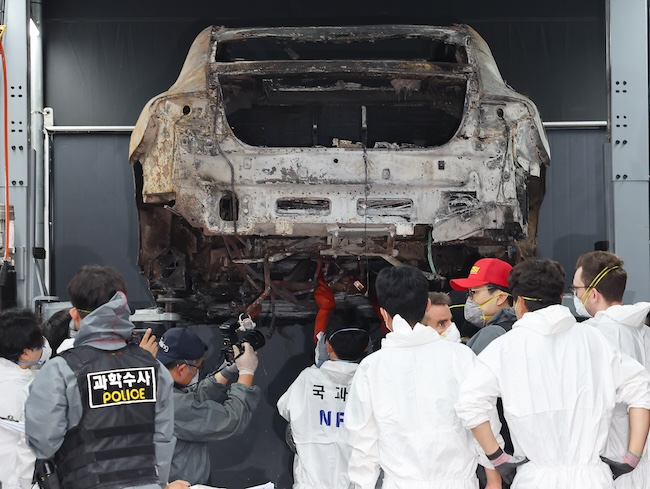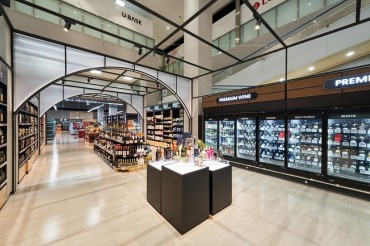
South Korea’s battery industry is doubling down on efforts to improve safety measures from the design and production stages. (Image courtesy of Yonhap)
SEOUL, Aug. 12 (Korea Bizwire) – In the wake of recent electric vehicle (EV) fires that have sparked debates about battery safety, South Korea’s battery industry is doubling down on efforts to improve safety measures from the design and production stages.
EV battery fires can rapidly spread through thermal runaway, where a single battery issue can trigger a chain reaction leading to fire and explosion. To combat this, battery manufacturers are advancing technologies to prevent such thermal propagation.
According to industry sources, LG Energy Solution is employing fire-resistant materials in its battery modules and producing battery packs with materials that slow the spread of fire beyond the pack. The company has also implemented cooling systems in modules and packs to prevent heat transfer.
LG’s premium high-nickel NCMA (Nickel-Cobalt-Manganese-Aluminum) batteries have improved thermal control through optimized design. Their mid-nickel NCM batteries, with 50-60% nickel content and higher manganese, boast over 30% better thermal stability due to lower heat generation.
The company plans to introduce “directional venting” technology in its cylindrical 46-series batteries, set for mass production later this year. This innovation rapidly expels internal explosion energy, reducing cell resistance and preventing chain ignition.
Post-production, LG uses Battery Management Systems (BMS) to monitor for battery anomalies. The company has partnered with U.S. semiconductor firm ADI for cell temperature measurement technology and recently announced an advanced BMS diagnostic solution for next-generation EVs in collaboration with Qualcomm.
Samsung SDI is focusing on prismatic batteries, widely considered the safest battery form factor. These batteries feature a large base area for effective cooling and come equipped with safety features like vents and fuses.
The company has also formed an internal group of experts to develop solutions optimized for each product line. They are also developing and refining software to predict thermal propagation.
SK On has introduced a “Z-folding” technique for separators, reducing cell stress and minimizing the risk of electrode contact, thereby lowering fire risk. The company has also commercialized a composite doping technology to enhance the structural safety of cathode active materials and improve long-term battery performance.
Despite these efforts, experts argue that even more robust technologies are needed, given batteries’ vulnerability to external impacts. Solid-state batteries, which replace flammable liquid electrolytes with solid ones, are seen as a potential “dream battery” that could significantly reduce fire risks.
In the meantime, proper battery management by EV drivers is crucial. Experts advise charging to 80-90% capacity rather than 100% as the best fire prevention method. Drivers can also utilize comprehensive battery diagnostic services like LG Energy Solution’s Battery Life Care to monitor battery condition via smartphone apps.
The South Korean government is set to hold an inter-ministerial meeting on EV fires on August 12, led by the Vice Minister of Environment, with participation from the Ministry of Land, Infrastructure and Transport; the Ministry of Trade, Industry and Energy; and the National Fire Agency. Based on the meeting’s outcomes, a comprehensive plan to address EV fires is expected to be announced in early September.
Kevin Lee (kevinlee@koreabizwire.com)






